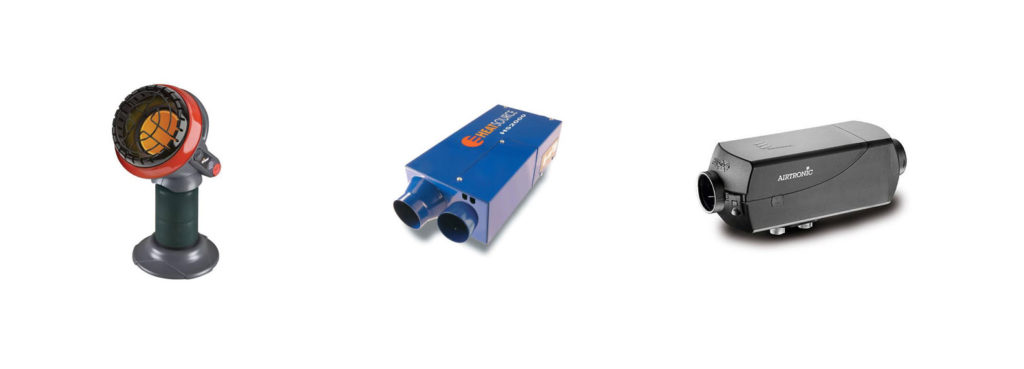A heater is definitely a creature comfort that can be passed up to keep the build cost and complication down. And there are lots of ways to keep comfortable without a heater, even when the temperatures drop – dress warm, use heavy blankets, and insulate your van well. Maybe even use a hot water bottle. Unless you’re going to be spending a lot of time in temperatures below 25F, you should be able to get by without a heater.
However! There’s no other system on our van that gives us as much pleasure as our heater! Nothing like coming back from a cold and wet adventure, cranking the heater, and basking in the warmth! Read on, to see what’s right for your rig.

More than any other on-board system, this is the most safety critical – regardless of what heater type you choose. We recommend you seek professional advice. You should also ensure you are well informed of the hazards, regulations and safety procedures involved in working with fuel systems. If installing any propane system inside your van, be sure to also install a propane leak detector. A carbon monoxide detector is also required. We are not professionals, and any information on this website should be supplemented with your own research and professional advice.
Heater Options

Disclosure: This page contains affiliate links. We earn commission if you click on a product link and make a purchase.
The Mr. Buddy heater is cheap, and doesn’t require any plumbing work since you can directly mount a standard 1 lb propane bottle to it. However, since this heater burns the propane directly inside the van, it can cause a lot of condensation, and needs really good ventilation. Moreover, it’s fairly large to have around in the van. Because of these reasons, we didn’t really consider it as a serious option.
The Propex and the Espar heaters are the industry standard for RV and camper van heaters. They are both ‘externally ventilated’ heaters – meaning that they use air from outside the van to burn the propane, and the exhaust gases are expelled outside the van as well. So the air inside the van remains dry, warm and clean. This does require you to drill holes in the floor of your van for the combustion inlet and exhaust outlet hoses – but that is pretty easy to do.

We didn’t want to get into the complexities of modifying the fuel tank to supply gasoline for the Espar heater, so we decided to go ahead with the Propex HS2000. It is a very reliable and efficient heater, and has worked pretty well for us.
Click the button below to read how we installed the HS2000. The manual for this heater is available here.
